1161 solutions
Search categories
-
-
111
-
0
-
1968
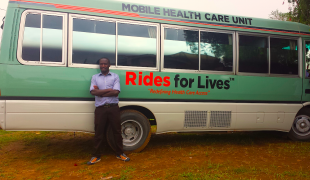
Health Access Corps, eine ugandische Non-Profit-Organisation zur Bekämpfung des fehlenden Zugangs zur Gesundheitsversorgung in nicht versorgten Gemeinden
CAREGIVING
Acquired Immunodeficiency Syndrome (AIDS)
In Person service
Enhancing health literacy
To implement medical examination
Building Supportive Community Relationships
To implement a diagnostic tool
Preventing (Vaccination, Protection, Falls, Research/Mapping)
Support on Puerperium/Post-childbirth
Raise awareness
Public Health
Uganda
-
-
-
106
-
0
-
1455

Klassenkameraden entwickeln eine binokulare Amblyopie-Therapie, um bei der Amblyopie-Behandlung zu helfen
-
-
-
123
-
0
-
1477
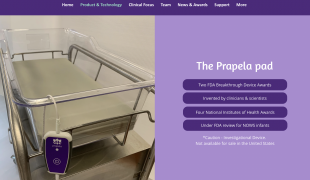
James Grey, Vater eines Frühgeborenen, hat ein Gerät entwickelt, das Vibrationen verwendet, um die natürliche Atmung eines Babys zu stimulieren und Apnoe zu reduzieren.
VENTILATION
SLEEP FUNCTION: Resting
Breathing related sleep disorder
Assistive Daily Life Device (to help ADL)
Improving respiratory function
To improve Treatment/Therapy
Preventing (Vaccination, Protection, Falls, Research/Mapping)
Support on Puerperium/Post-childbirth
Raise awareness
Caregiving Support
General and Family Medicine
Pediatrics
Physical Medicine and Rehabilitation
Pneumology
United States
-
-
-
107
-
0
-
1802

Arthritis-Patient entwickelt den Uccello-Wasserkocher, eine Lösung, die Menschen mit Behinderungen dabei helfen soll, sicher mit kochendem Wasser umzugehen.
Cooking
(SELF)-CARE: EATING: Eating independently.
Arthritis
Assistive Daily Life Device (to help ADL)
Muscle weakness
Limited range of motion
Muscle pain or stiffness
Reduced grip force (grip)
Loss of muscle coordination
Muscle cramps or spasms
Muscle twitching
Promoting self-management
Promoting inclusivity and social integration
Rheumatology
Australia
-
-
-
118
-
0
-
1785
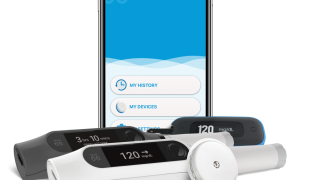
Pflegekräfte entwickeln „The Bigfoot Unity System“, das erste intelligente Insulinabgabesystem für Diabetiker
(SELF)-CARE: EATING: Eating independently.
CAREGIVING
(SELF)-CARE: DRINKING: Drinking independently.
diabetes type 1
Assistive Daily Life Device (to help ADL)
App (Including when connected with wearable)
AI algorithm
Managing diabetes
Manage Medication
To improve Treatment/Therapy
Caregiving Support
Endocrinology
United States
-
-
-
128
-
0
-
1621

Cláudia Arantes, eine Palliativmedizinerin, hat die Plattform Casa do Cuidar gegründet, die sich um Patienten mit unheilbaren Krankheiten kümmert.
CAREGIVING
Social interaction
Blood Pressure Disorders
Website
In Person service
Online service
Book/Comic
Managing pain
Enhancing health literacy
Promoting self-management
Building Supportive Community Relationships
Promoting inclusivity and social integration
Enhancing Mental Health
Preventing (Vaccination, Protection, Falls, Research/Mapping)
Raise awareness
Caregiving Support
Child and Adolescent Psychiatry
Dermatology
General and Family Medicine
Internal Medicine
Medical Oncology
Pediatrics
Psychiatry
Vascular Surgery
Brazil
-
-
-
109
-
0
-
1944
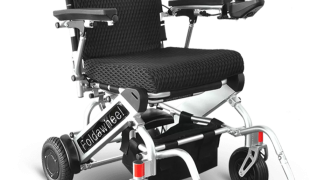
Sohn kreiert Foldawheel, einen tragbaren, faltbaren und leichten Rollstuhl, um seinem Vater zu helfen, Autonomie zu erlangen
MOVING IN A WHEELCHAIR: Moving using a wheelchair.
CAREGIVING
Stroke
Walking Aid (wheelchair/walker/crutches)
Back pain
Loss of muscle coordination
Chest pain or discomfort
Fatigue
Numbness or weakness in the legs
Shortness of breath
Managing pain
Rehabilitating After Stroke
Neurology
Physical Medicine and Rehabilitation
Malaysia
-
-
-
122
-
0
-
1775

Jessica und Steven, Betreuer von Mutter und Großvater mit Krebs und Parkinson, haben eine ermutigende Unterstützungs-App für Betreuer entwickelt.
-
-
-
122
-
0
-
1885
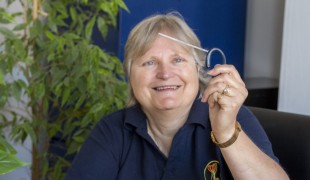
Der Patient erstellt Eye Guide MC, ein Gerät zur Kontrolle der Symptome der Parkinson-Krankheit
WALKING: Walking
(SELF)-CARE: EATING: Eating independently.
BODY BALANCE: Maintaining body balance
COMMUNICATION: Communicating, whether by speaking, listening, or other means
Parkinson's Disease
Assistive Daily Life Device (to help ADL)
Tremors
Difficulty coordinating movements
Stiffness or rigidity (difficulty moving)
Paralysis of the legs and lower body
Muscle weakness
Loss of balance
Difficulty speaking or understanding speech
Trouble with fine motor skills (e.g., writing, buttoning clothes)
Twitching or involuntary movements (myoclonus)
Headaches
Sensory disturbances (e.g., hypersensitivity to touch, temperature changes)
Regaining sensory function
Recovering cognitive function
Promoting self-management
Maintaining Balance and Mobility
Neurology
United Kingdom
-
 de
de